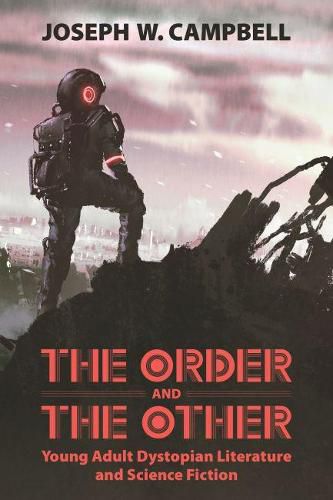Readings Newsletter
Become a Readings Member to make your shopping experience even easier.
Sign in or sign up for free!
You’re not far away from qualifying for FREE standard shipping within Australia
You’ve qualified for FREE standard shipping within Australia
The cart is loading…






This title is printed to order. This book may have been self-published. If so, we cannot guarantee the quality of the content. In the main most books will have gone through the editing process however some may not. We therefore suggest that you be aware of this before ordering this book. If in doubt check either the author or publisher’s details as we are unable to accept any returns unless they are faulty. Please contact us if you have any questions.
In the mid- to late 2000s, the United States witnessed a boom in dystopian novels and films intended for young Audiences. At that time, many literary critics, journalists, and educators grouped dystopian literature together with science fiction, leading to possible misunderstandings of the unique history, aspects, and functions of science fiction and dystopian genres. Though texts within these two genres may share similar Settings, plot devices, and characters, each genre’s value is different because they do distinctively different sociocritical work in relation to the culture that produces them. In The Order and the Other: Young Adult Dystopian Literature and Science Fiction, author Joseph W. Campbell distinguishes the two genres, explains the function of each, and outlines the different impact each has upon readers.
Campbell analyzes such works as Lois Lowry’s The Giver and James Dashner’s The Maze Runner, placing dystopian works into the larger context of literary history. He asserts both dystopian literature and science fiction differently empower and manipulate readers, encouraging them to look critically at the way they are taught to encounter those who are different from them and how to recognize and work within or against the power structures around them. In doing so, Campbell demonstrates the necessity of both genres.
$9.00 standard shipping within Australia
FREE standard shipping within Australia for orders over $100.00
Express & International shipping calculated at checkout
This title is printed to order. This book may have been self-published. If so, we cannot guarantee the quality of the content. In the main most books will have gone through the editing process however some may not. We therefore suggest that you be aware of this before ordering this book. If in doubt check either the author or publisher’s details as we are unable to accept any returns unless they are faulty. Please contact us if you have any questions.
In the mid- to late 2000s, the United States witnessed a boom in dystopian novels and films intended for young Audiences. At that time, many literary critics, journalists, and educators grouped dystopian literature together with science fiction, leading to possible misunderstandings of the unique history, aspects, and functions of science fiction and dystopian genres. Though texts within these two genres may share similar Settings, plot devices, and characters, each genre’s value is different because they do distinctively different sociocritical work in relation to the culture that produces them. In The Order and the Other: Young Adult Dystopian Literature and Science Fiction, author Joseph W. Campbell distinguishes the two genres, explains the function of each, and outlines the different impact each has upon readers.
Campbell analyzes such works as Lois Lowry’s The Giver and James Dashner’s The Maze Runner, placing dystopian works into the larger context of literary history. He asserts both dystopian literature and science fiction differently empower and manipulate readers, encouraging them to look critically at the way they are taught to encounter those who are different from them and how to recognize and work within or against the power structures around them. In doing so, Campbell demonstrates the necessity of both genres.